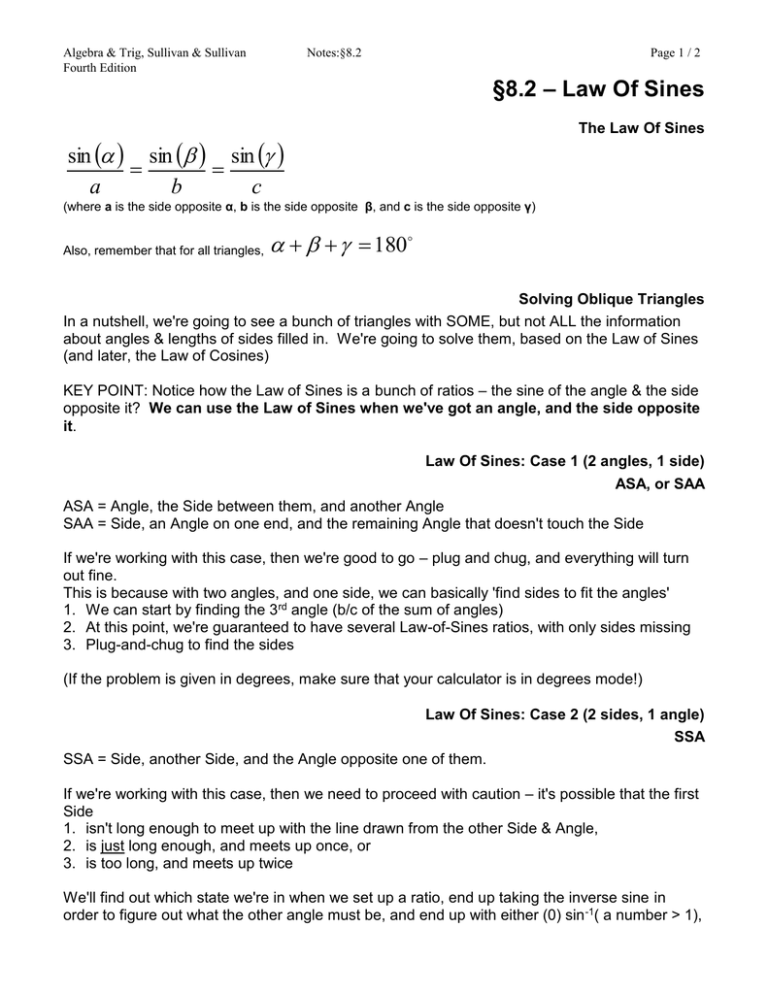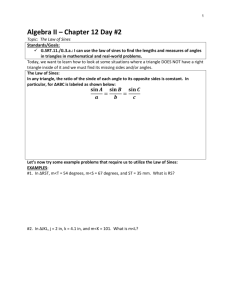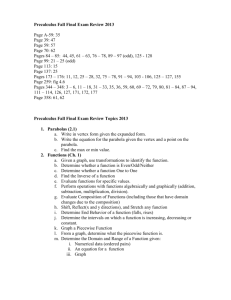Notes - 8.2 (4e) - Panitz
advertisement

Algebra & Trig, Sullivan & Sullivan Fourth Edition Notes:§8.2 Page 1 / 2 §8.2 – Law Of Sines The Law Of Sines sin sin sin a b c (where a is the side opposite α, b is the side opposite β, and c is the side opposite γ) Also, remember that for all triangles, 180 Solving Oblique Triangles In a nutshell, we're going to see a bunch of triangles with SOME, but not ALL the information about angles & lengths of sides filled in. We're going to solve them, based on the Law of Sines (and later, the Law of Cosines) KEY POINT: Notice how the Law of Sines is a bunch of ratios – the sine of the angle & the side opposite it? We can use the Law of Sines when we've got an angle, and the side opposite it. Law Of Sines: Case 1 (2 angles, 1 side) ASA, or SAA ASA = Angle, the Side between them, and another Angle SAA = Side, an Angle on one end, and the remaining Angle that doesn't touch the Side If we're working with this case, then we're good to go – plug and chug, and everything will turn out fine. This is because with two angles, and one side, we can basically 'find sides to fit the angles' 1. We can start by finding the 3rd angle (b/c of the sum of angles) 2. At this point, we're guaranteed to have several Law-of-Sines ratios, with only sides missing 3. Plug-and-chug to find the sides (If the problem is given in degrees, make sure that your calculator is in degrees mode!) Law Of Sines: Case 2 (2 sides, 1 angle) SSA SSA = Side, another Side, and the Angle opposite one of them. If we're working with this case, then we need to proceed with caution – it's possible that the first Side 1. isn't long enough to meet up with the line drawn from the other Side & Angle, 2. is just long enough, and meets up once, or 3. is too long, and meets up twice We'll find out which state we're in when we set up a ratio, end up taking the inverse sine in order to figure out what the other angle must be, and end up with either (0) sin -1( a number > 1), Algebra & Trig, Sullivan & Sullivan Fourth Edition Notes:§8.2 Page 2 / 2 which means there's no solutions, two possible angles, or just one (the other will be ruled out b/c it, plus the given one, sums to > 180)



